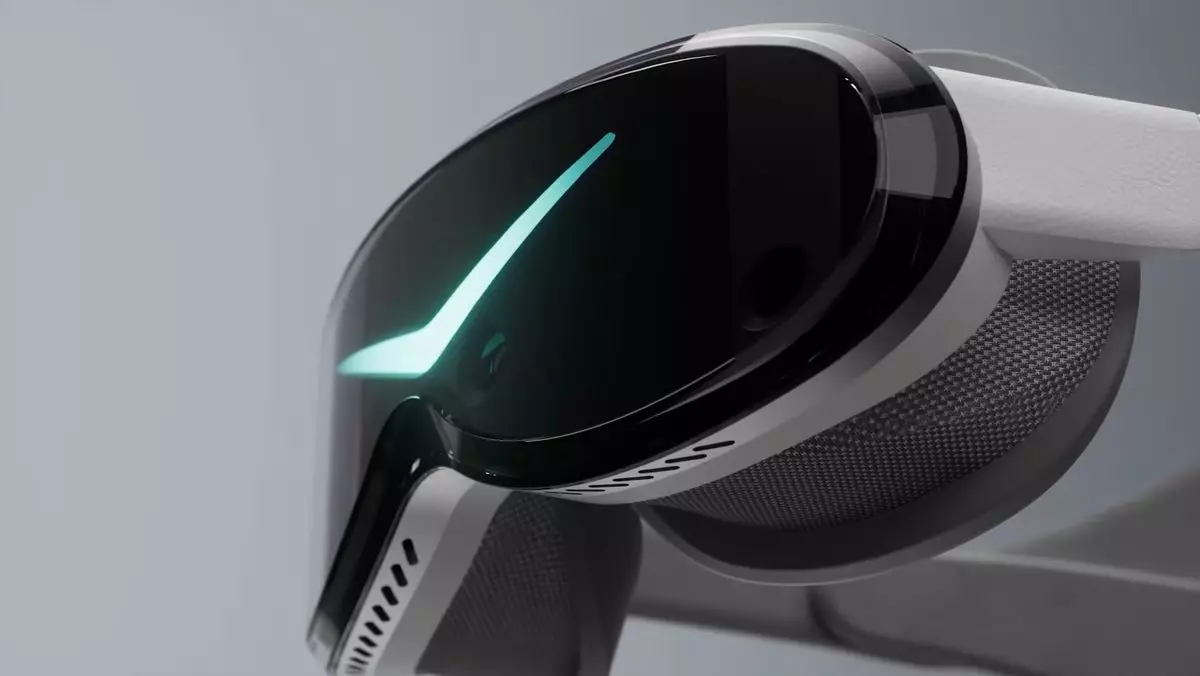Virtual reality has rapidly evolved since its nascent stages, and with the persistent pursuit of technological excellence, we have witnessed groundbreaking advancements in headset design and functionality. The recent announcement of the Pimax Dream Air VR headset exemplifies this trend, claiming to redefine user experiences by prioritizing both form and function. In stark contrast to its heavyweight predecessors, such as the Valve Index, which weighs more than 800 grams, the Dream Air’s astonishingly lightweight construction—less than 200 grams—signals a pivotal shift in the VR landscape. This headset is not merely about weight reduction; it promises to preserve high-performance standards without sacrificing essential features.
Pimax has adopted cutting-edge Micro-OLED technology for the Dream Air, similar to that found in Apple’s Vision Pro. This technology is instrumental in achieving a compact design while retaining impressive display quality. With pancake optics and an integrated Qualcomm chip, the Dream Air stands out not just in terms of weight, but also in delivering an immersive experience that could arguably rival other high-end models. Its sleek, gray, and curvy design hints at an aesthetic appeal that resonates with tech-savvy consumers. By incorporating features typically expected in heavier models within a lighter framework, Pimax is poised to attract a broad audience eager for innovation.
The Dream Air headset boasts an impressive array of features, including inside-out tracking cameras, spatial audio capabilities, and auto-IPD (inter-pupillary distance) adjustments. Additionally, it comes equipped with hand and eye tracking, which elevates user interaction to unprecedented levels. Pimax claims that this is the only VR headset in its weight category to offer eye tracking, which could significantly enhance precise control in virtual environments. The integration of various types of ports, such as Type-C DisplayPort and accessories port, further reflects Pimax’s commitment to connectivity and user convenience.
While competing options like the 127 g Bigscreen Beyond exist, the inclusion of eye tracking in the Dream Air positions it uniquely within the VR market. However, its entry into the high-end segment, with a hefty price tag of $1,199 for reservations and nearly $2,000 in total, raises important questions about value. Consumers will have to weigh whether the substantial premium over the more affordable Pimax Crystal Super—priced at $699—is justified, particularly when both models come with differing trade-offs.
Comparative Analysis with Previous Models
Despite Pimax’s ambition, it’s essential to contextualize the Dream Air within its lineage. The original Pimax Crystal headset received lukewarm critical reception, primarily due to performance inconsistencies. However, the incorporation of Micro-OLED displays and enhanced specifications in the new Crystal Super suggests that Pimax is keen on course correction. While the Dream Air shines with its lightweight design, the traditional performance issues associated with previous iterations of the brand could cloud consumer perception.
Moreover, the anticipated delivery of the Dream Air in May 2025, subsequent to the release of the more modular Crystal Super, will determine whether consumers will opt for the pricier, less bulky model or the heavier, more versatile one. The competitive dynamics in this space will likely hinge on user preferences regarding weight, design, and functionality.
The Road Ahead: What Lies Beyond?
As we await the reality of the Dream Air headset, it becomes increasingly clear that the future of virtual reality may not just be about grand specifications or stunning visuals but about how technology can coexist with user comfort. While the Pimax Dream Air exhibits great potential, it faces challenges and skepticism around its premium price and long-term performance viability compared to established competitors. Whether this headset can truly ‘change the game’ will depend on its real-world functionality, user satisfaction, and broader reception in the tech community. As VR technology continues to evolve, innovative designs like the Dream Air could pave the way for a new standard—one that successfully marries luxury with utility.

